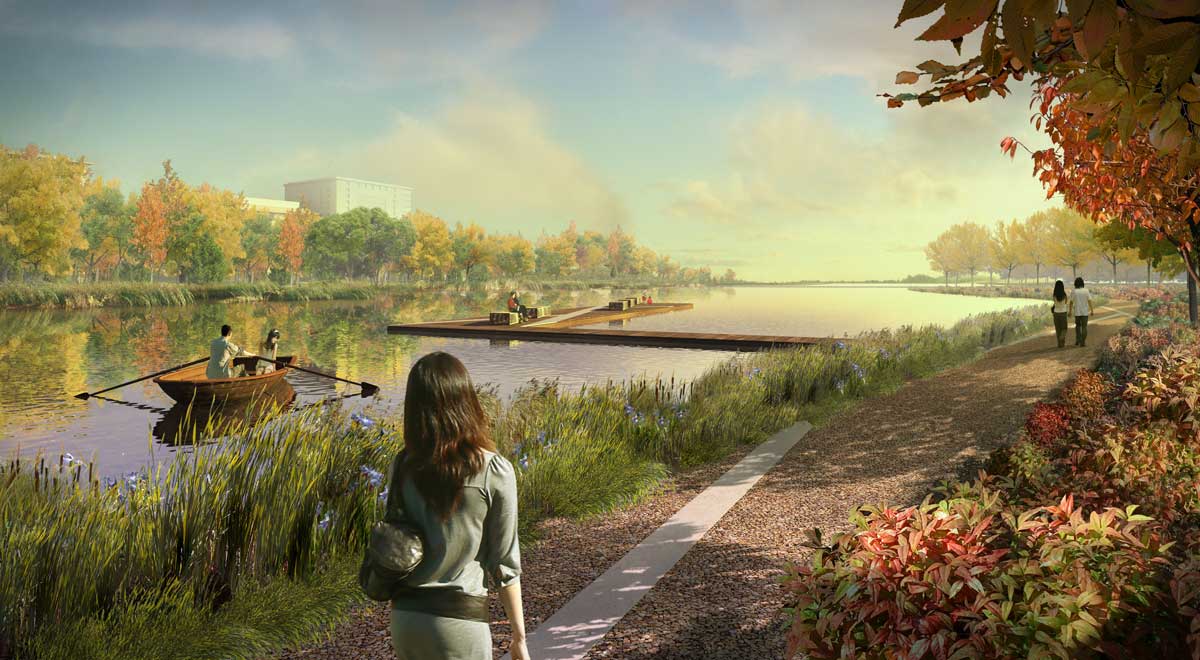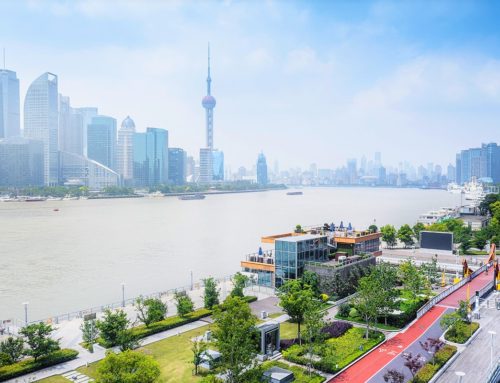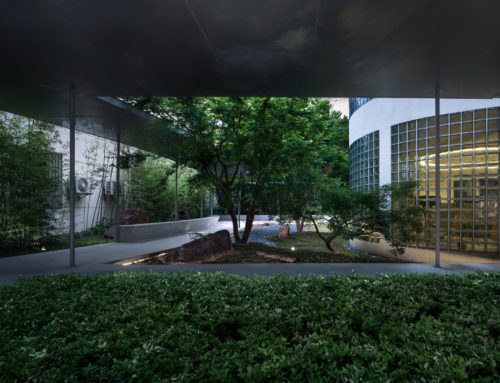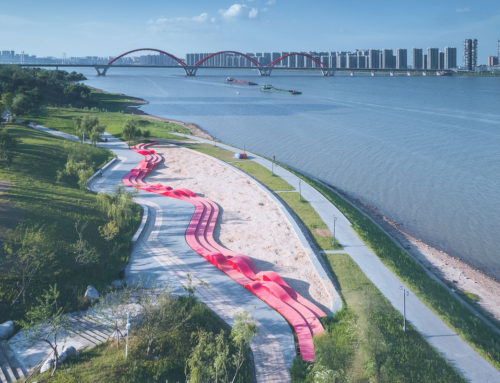感谢来自 SASAKI 对ALA-Designdaily的分享。Appreciation towards SASAKI for providing the following description:
SASAKI: As part of China’s nationwide effort to create more livable cities, the Jiading district of Shanghai embarked on a significant endeavor to create public open space and restore natural systems within a new 70-hectare central park. After five years of design and construction, Jiading New City Ziqidonglai Landscape Axis opened to the public. The linear park is the largest urban open space in this rapidly expanding district and acts as a walkable green corridor connecting otherwise separate urban neighborhoods and integrating with surrounding landscapes. Its combination of poetic form, cultural expression, public use, and ecological restoration creates a multi-dimensional experience that will be enjoyed by many generations to come.
At project outset, the district’s master plan failed to comprehensively understand the impact of cross-traffic on the public green space. In a critical first move, the design team intervened to minimize fragmentation, reducing the number of roadways crossing the park and constructing pedestrian overpasses or underpasses where roads remained—critically preserving a holistic park experience for wildlife and pedestrians alike.
Sasaki’s design concept for the park, “Dancing in the Woods,” is based on a contemporary interpretation of traditional Chinese painting, calligraphy, and dance. The park emphasizes the rich cultural heritage of Jiading, and integrates this with the natural setting of the site. Natural landscape elements such as floating clouds and flowing water, common themes in the paintings of local artist Yanshao Lu, are reinterpreted into modern, dynamic forms representing movement and influencing how people interact with the landscape. Four major paths in the park interweave and interact with a variety of park elements in a choreographed composition, twisting and turning along the space and landforms. Spatial configurations within the park embrace dichotomies of form and purpose–openness and privacy, monumental and intimate, active and quiet, urban and pastoral, straight and curvilinear, elevated and recessed.
With a strong foundational understanding of the project context and an articulated design vision, the team embarked on sustainability-driven design that produced outstanding change for the area. This strong commitment to supporting the ecological system and a people-oriented spirit is manifested in sustainable design details, including universal accessibility on all pathways, restored wetlands, new woodland, native plantings that bolster the local bio-community, a stormwater management system, limited artificial lighting, and efficient reuse of existing materials and on-site structures.
As a result of an interdisciplinary approach, inspired vision, and meaningful sustainable design, Jiading Park in Shanghai has transformed the area. Restoring wetland and woodland has drastically improved water and air quality and biodiversity; Rainwater harvesting has decreased potable water demand by 3.3 million gallons annually; and reuse of materials like asphalt and salvaged roof tiles have reduced emissions and lowered construction costs.
Today’s park features clear water and fishermen where dirty canals and algae blooms once proliferated. A quiet promenade takes the place of a noisy roadway. Birds circle the skies and float on the canal. People of all ages take to the sports fields and wander the paths. The green corridor is the heart of the New City and has quickly become a new signal of vitality for the region.
Data
Project name: Jiading Central Park
Project location: Shanghai, China
Landscape Architect: SASAKI
Client name: Shanghai Jiading New City Development Company
Completion date: 2012
Size: 70 hectares
Services: Urban Design
Landscape Architecture
Architecture
Civil Engineering
Transportation
Graphic Design
Sustainable Features:
• Habitat restoration
• Stormwater management
• Energy efficiency
• Water quality improvements
• Native planting material
Materials:
100% native plant species
Recycled asphalt
Locally sourced stone, wood and other materials
Recycled glass
Permeable paving
Dark sky compliant lighting








评论